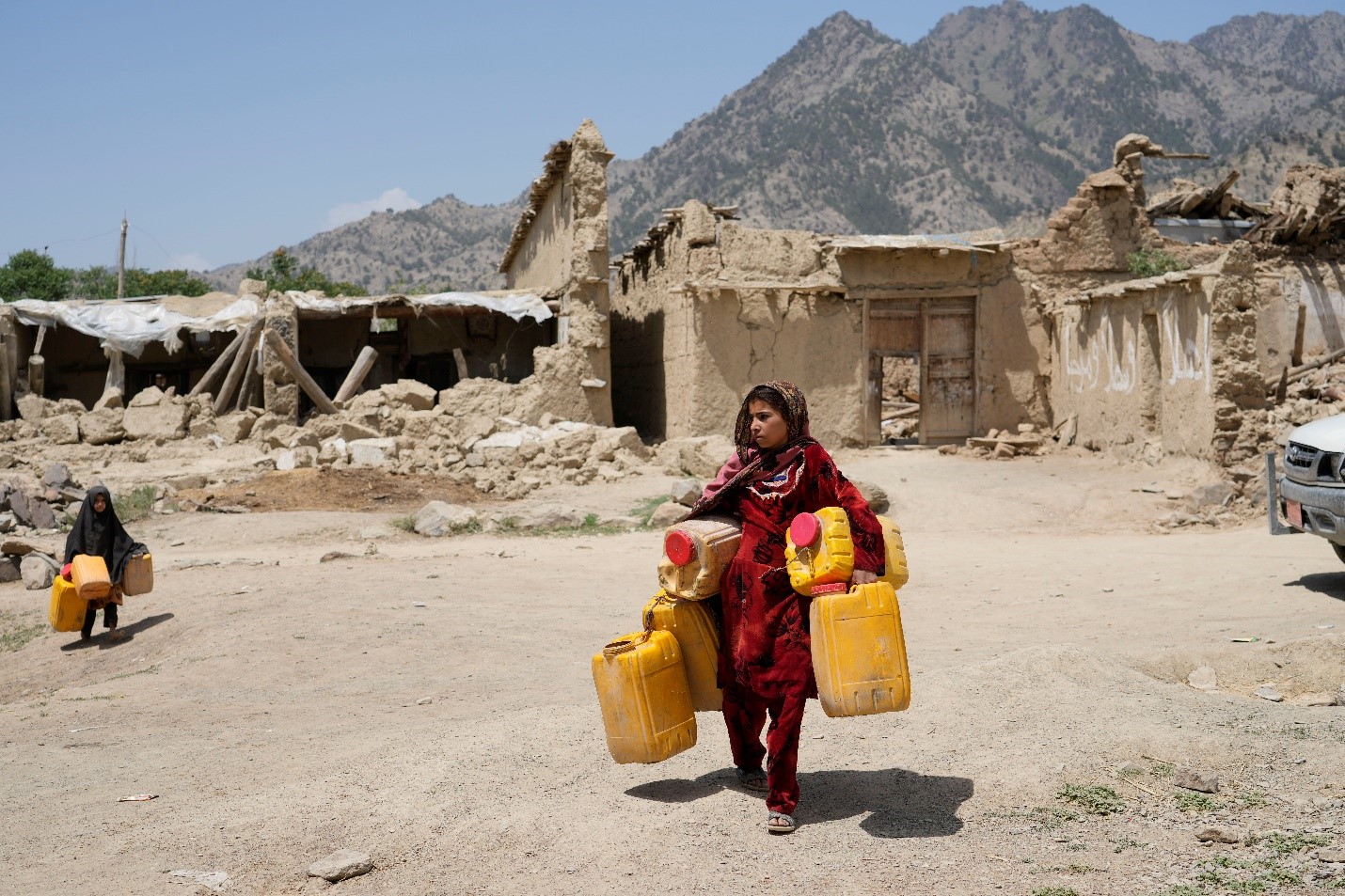
Photo credit: AP Images
Around the world, disaster shelters are designed around standard definitions of a “house” and a “household,” but when humanitarian agencies fail to recognize locally-specific family structures and building traditions, the resulting shelters aren’t just ill-suited—they can introduce new safety concerns. In Afghanistan, the failure to fully realize the need for locally appropriate shelter layouts has come at a considerable cost, particularly to women.
Following the earthquakes in southeastern Afghanistan (June 2022), with winter looming, emergency responders focused on getting a roof safely over the heads of affected families as soon as possible. Free-standing reinforced concrete and earthen houses were quickly erected to meet the immediate needs, but in this region, the household unit is not the “house” nor the “nuclear family”—it’s the compound.
Compounds have thick perimeter Pakhsa walls (primarily raw earth) built around four to five perimetral rooms with open space in the center. Though more than 5,000 houses have been rebuilt with the support of humanitarian aid, the lack of adherence to traditional compound layouts has introduced hiding spaces, narrow corridors, and reduced open spaces that increase the risk of gender-based violence.
Without the protection of compound walls, many families remain in temporary shelters outside of their villages, and many of these new houses remain unoccupied. With the recent earthquakes in Western Afghanistan (October 2023), there is an opportunity to apply lessons learned from the southeast region and prioritize the safety of women.
Compound walls expand shelter services and improve women’s well-being
In many Afghan households, women are culturally required to stay in the home and, therefore, would be confined inside these provided shelter structures. By contrast, the compound is a communal space for cooking, water wells, gardening, livestock, and a place where women can move, work, and socialize with family members within the safety and privacy provided by the thick and high earthen walls. When this understanding is integrated into shelter solutions from the preliminary phases, this open space can be preserved. This is not only crucial to improve women’s quality of life and prevent gender-based violence, but it also improves sanitation, nutrition, and other shelter outcomes.
For the well-being and protection of women, recommendations for shelter layouts include:
- Central open space. Secluded spaces may increase the likelihood of gender-based violence. Open spaces also allow for agricultural activities and let children play while elders keep an eye on them.
- An entrance to the compound that is visible from all structures. This ensures all residents are aware of who is entering.
- Shared spaces for cooking, water, hygiene, and agriculture. This allows women to provide their families with basic needs and have an opportunity for safe mobility and socializing.
Both construction techniques and layouts matter
On multiple occasions, the provided shelters disturbed the traditional compound layout, but they also introduced incompatible building materials that posed structural risks. The following are recommendations for safely adapting shelters with the addition of local (vernacular) construction:
- Pakhsa and Khama-hashtag walls (traditional raw earth walls) should not be built within 15 cm of concrete structures. Reinforced concrete performs differently than vernacular building materials during earthquake motion. The interaction between reinforced concrete and earthen walls could cause damage to the structures. By leaving sufficient space, both structures can freely move relative to each other.
- The traditional practice of soil-capping on top of walls is recommended where rain or snow might enter between existing and new walls and cause moisture problems that weaken the earthen structures.
Shelter is about more than four walls and a roof over your head, and shelter professionals must work toward improving the process—even in the most urgent scenarios. Due to the humanitarian sector’s one-size-fits-all approach, the lives of Afghans have been disrupted, and a large number of women lack the mobility they once had within the compound. Shelter professionals must always balance the need for urgent shelters with the need to develop locally specific, culturally relevant solutions in joint collaboration with the affected populations themselves. This situation in southeast Afghanistan underscores the need to prioritize dialogue and re-assessment collaborative shelter approaches and can guide current humanitarian efforts underway following the series of devastating earthquakes in western Afghanistan.
–
Zubair Hashmi, Hector Esteban, and Lucienne Noel work for Miyamoto International, a disaster management and earthquake engineering firm working on shelter and reconstruction in southeastern and western Afghanistan, as well as in disaster-affected communities throughout the world.
